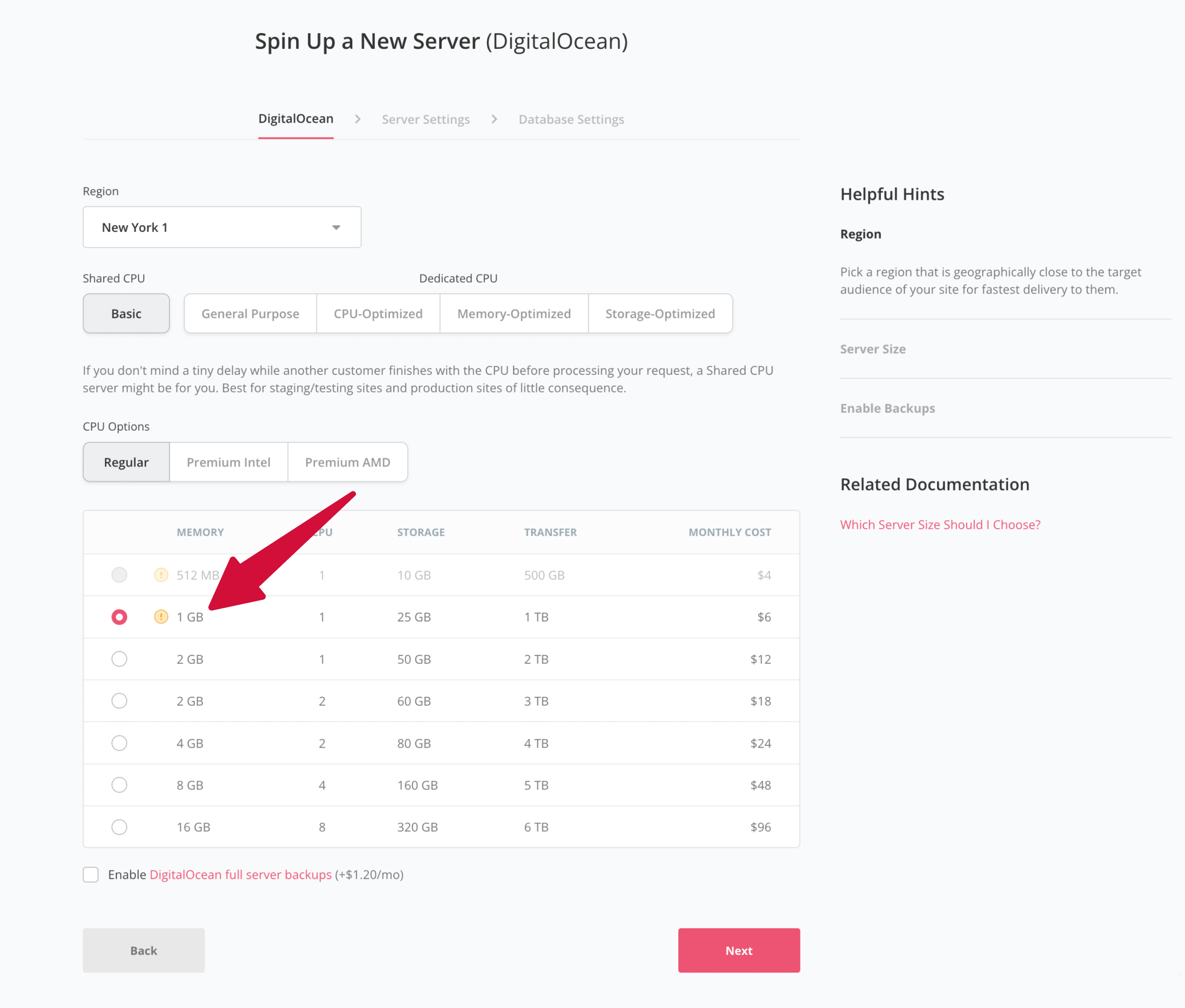Server Size
Our Recommendations
- For sites where every page can be full page cached, we recommend a max of 20 sites on at least a 2 GB / 1 shared CPU server.
- For a site that has pages that can’t be cached (e.g. WooCommerce), we recommend just that one site on at least a 4 GB / 2 dedicated CPUs server.
Server Size
One of the first things you are asked when spinning up a new server in SpinupWP is which Server Size you would like to choose from the CPU options.

Unfortunately, there is no simple answer to this question as the size of the server you should pick will depend on multiple factors:
- How much traffic will be served from the page cache (e.g. e-commerce)
- How much traffic you’ll serve at peak times
- Whether or not you’ll use an external database
- The size of the database
- The size of the media library
Although server providers allow you to resize servers, we don’t recommend this. Instead, we suggest creating a larger server than what you’re likely to need, with some wiggle room. If you do get to a point where you need to scale up, we have guides on how to do this.
Picking a Server Size
So what server size is right for you? Here are some things to consider:
- We specify a minimum of 2 GB for running a WordPress site properly on SpinupWP’s tech stack.
- Lots of smaller sites can be hosted on a single server if page caching is enabled (we recommend 10-20 sites on a 2 GB / 1 shared CPU server).
- For a bigger, more computationally intensive, or dynamic site we recommend hosting it on its own, larger, server. For example, if you have a high-traffic WooCommerce site, we recommend hosting it separately on a 2 CPU / 4 GB server.
In our benchmarks, we’ve shown that with page caching you can serve up to 750 concurrent requests with an average response time of 120 milliseconds with just a 1 GB / 1 shared CPU server. While we wouldn’t recommend pushing your server to these kinds of limits, it goes to show that you can serve a lot of cached pages with very little resources.
Shared CPU vs. Dedicated CPU
Vultr, DigitalOcean, Akamai/Linode, and Hetzner all offer shared CPU servers as well as dedicated CPU servers. Essentially, they’re exactly what they sound like. With a shared CPU server, you’re sharing CPU resources with someone else’s server and with a dedicated CPU server, CPU resources are yours alone.
If you don’t mind a tiny delay while another customer finishes with the CPU before processing your request, a Shared CPU server might be for you. Best for staging/testing sites and production sites of little consequence.
If you want confidence that your CPU is ready to serve requests as they come in, a Dedicated CPU server is for you. Best for important production sites with limited page caching, especially those running heavy plugins like WooCommerce.
Although shared CPU servers are considerably less expensive than dedicated CPU servers, you also get a lot more performance. In our benchmarks, we found a massive improvement in average response times for a dedicated CPU server over a shared CPU server.
When Should I Upgrade My Server?
Before you can decide if you need to upgrade your server, you will need to know how your server resources are being used. Most server providers offer resource monitoring (CPU, memory, disk space, etc.) included as part of their service. If your server provider doesn’t offer this, you can SSH to your server and use tools such as top or htop to find the same information.

As a general rule, we recommend you try and keep server memory usage at 60% or below to allow for traffic spikes. If your server CPU usage or memory usage is consistently high then it might be time to upgrade your server.